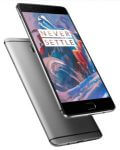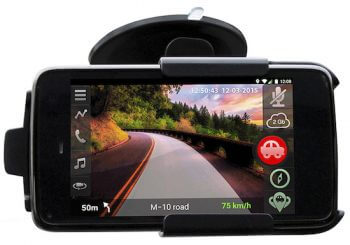 Got a new Smart Phone? Not sure what to do with the old one? Why not turn it into a DashCam or Home Security Cam? There’s an App for that!
Got a new Smart Phone? Not sure what to do with the old one? Why not turn it into a DashCam or Home Security Cam? There’s an App for that!
Many people never think of the many productive ways they can use their old Smart Phone once that shiny new one arrives. Often, it just goes in the top drawer of the dresser, ignored until it’s forgotten.
Don’t do that. Just because that older Smart Phone isn’t quite as smart as the new one doesn’t mean it can’t be put to good use. Turning it into a DashCam or a Home Security Cam is the perfect job for retired Smart Phones.
As a DashCam, it can record your daily commute to work and back, or a trip to Grandma’s house. Every time you drive somewhere, there is potential for an accident, or to witness something spectacular from the comfort of the driver’s seat. Your Smart Phone/DashCam can record it all.
The Hardware
 Along with a suitable Smart Phone, you’ll need to pair it up with a phone holder that mounts to the front windscreen, or somewhere that lets the camera lens see above the car’s dashboard and doesn’t interfere with it’s view of the road. Keep these things in mind when looking for the right holder. If your phone has both a front facing and rear facing lens, you want both to have clear view. Sometimes, you might want to record what is going on behind you, too. Like when you get pulled over by the Highway Patrol.
Along with a suitable Smart Phone, you’ll need to pair it up with a phone holder that mounts to the front windscreen, or somewhere that lets the camera lens see above the car’s dashboard and doesn’t interfere with it’s view of the road. Keep these things in mind when looking for the right holder. If your phone has both a front facing and rear facing lens, you want both to have clear view. Sometimes, you might want to record what is going on behind you, too. Like when you get pulled over by the Highway Patrol.
If your phone has a slot for it, you’ll want to purchase a Micro-SD memory card to give the phone extra memory on which to store the DashCam videos. Generally, I would recommend a 16 Gigabyte (GB) or 32GB card designated as Class 10. A memory card not designated as Class 10 may not have adequate data input speed which is required to reliably store the videos without crashing the App or the phone. The Class 10 designation assures you that the memory card will have the speed to do the job.
Some DashCam Apps may give you options on the resolution you wish to record your trip. Lower resolutions will require less memory. You may also be able to choose which lens, front or back, you use to record your trips. Higher resolutions will give a high-quality picture when you play the video back. Because higher resolutions use more memory, a larger memory card may be needed to record very long trips. The App may also allow you to set a designated amount of memory and record in designated time blocks, automatically deleting older videos when memory is running out to make room for the next video block.
Another thing you’ll want to consider is how to charge the phone/DashCam. In my case, all of my phones use a Micro-USB charging cable (USB on one end, microUSB on the other). I picked up a cigarette lighter charging adapter with dual USB ports so that I can run the phone/DashCam and charge my new Smart Phone at the same time, if needed. Consider your options vs. your needs and get the charger or cables you’ll need in your specific circumstances.
The Software
You need to choose an App to do the job of converting your old phone into a DashCam. Some Apps will offer more features while others focus more on ease of use and a simple interface.
A quick search of the term “DashCam” on Google Play provided a page full of such Apps, most of them free. All of these Apps offer different features and focus. For Android phones, two good Apps to start with are CamOnRoad or DailyRoads Voyager. These two Apps are rated above 4 stars in the Play Store. There are others you may want to consider as well. They all do things a little differently but are not difficult to use or configure. So, read the features list and check the user rating, then choose the one that best fits your needs.
The App should be able to work in the background, recording your trip, while you can still use the phone to play you favorite MP3 music files, or use the phone’s GPS feature to navigate your route.
Ultimately, a device that was actually designed for the purpose of being used as a DashCam will likely provide a more complete, robust, and fulfilling DashCam experience. If you want to save yourself the expense, or find a useful job for that older Smart Phone you just retired, this might be a good choice for recycling that phone to a new purpose.
Home Security Cam
Another great way to re-purpose your older Smart Phone is to use it as a PetCam, BabyCam, GrannyCam, or a plain ol’ Home Security Cam. Again, there is a plethora of Apps available for both iPhone and Android phones for this purpose. One popular example is Alfred.
Alfred
Alfred is a mobile App that turns your old Smart Phone into a Home Security Camera and allows you to to monitor what’s going on at your home no matter where you are. Some of these Apps, including Alfred, have motion detection and push notification features to alert you when something is going on. They also allow for two-way conversations. When a would-be thief picks up that package UPS just placed on your door step, you can deter him by shouting, “Put that package down!”
Of course, he might also steal your re-purposed Smart Phone along with the package. But, at least you can have a copy of the video uploaded to your DropBox. You can use the video later on for prosecuting the thief. Alfred is a free App, available for both Android and iPhone.
With Security Cam Software installed, you can use your old Smart Phone for just about any purpose for which you would you buy a security cam. One big difference, however, is that your Smart Phone won’t have the infrared lights needed for night vision. Most good security cams will have this feature. Some of the security cam phone Apps will let you light up your camera’s LED light, which will provide some light in darkness for a limited range. Otherwise, Smart Phone security cams work best where there is sufficient light.
These Apps are generally pretty easy to setup and use. However, things didn’t go so smoothly for me when I tried to use the Alfred WebViewer on my desktop PC.
Using Alfred, you would typically have the Alfred App installed on a second Smart Phone from which you would be able to view your Alfred cam video feed. This works very well. Alfred also lets you access the camera’s video feed from a Firefox browser page. However, in my trials, I could not get the Alfred WebViewer page to show my camera’s video. I used a clean Firefox profile (no extensions) in the most up-to-date version (47.0 at the time of this writing) of the browser. I logged into the same Gmail account on both devices as required. But, no picture.
In a previous experience with contacting the App’s author, Alfred Labs, they were very responsive to my inquiries. I plan to contact them, when I have time, to get help with the WebViewer page so that I can ask them why I could not get it to work properly to view my camera’s video stream from my desktop browser.
AtHome Video Streamer
After toying with Alfred, I installed AtHome Video Streamer on my Moto G phone to give it a test run. Then, I installed the sister program, AtHome Camera, on my PC. Setting up the camera in the AtHome Camera program required entering the CID from the AtHome streamer App on my Moto G phone. Unfortunately, the CID number was hiding behind the “Generate QR code” button. It would have been a very simple setup if the CID number had been visible.
To make this work, I needed the CID. I had to be resourceful. I grabbed my Moto X, opened QR Droid and scanned the QR code from the Moto G. It worked! QR Droid revealed the CID number. I entered the CID into the Camera App setup and, in no time, I was viewing the video from my Moto G on the computer monitor.
The AtHome Camera program also allowed me to switch between the front facing camera and the back facing camera. So, using my Moto G as a security cam actually gave me two security cameras in one nice, neat little Moto G Smart Phone. Very cool!
My next project will be to set up Dynamic Domain Name Server (DDNS) so these cameras can be viewed remotely from anywhere I go. I’ll let you know how that goes in another article. Stay tuned!
—



Daniel, how fascinating & such a great use for an old phone.
For the home security, are you wifi-ing the stream to your computer or via a mobile(cell) phone account?
Sorry, as an older person I’m not very well up on mobile phones but with access to an old phone & having a need for a home security it seems an ideal pairing for me.
The cell phone, a Moto G, is connected to my WiFi network. It feeds the video stream over the WiFi network. I can access the feed on my PC or on my current cell phone (Moto X), both of which are connected to the same WiFi network.
This should be doable as long as the old smartphone has WiFi capability.
You might try looking for a YouTube video for additional reference.